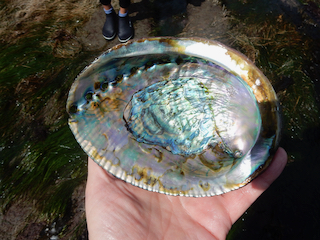
shell of Haliotis fulgens (green abalone)
| 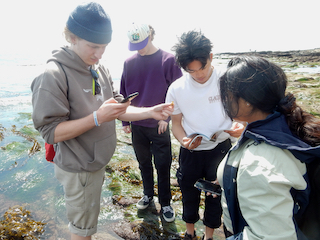
-
| 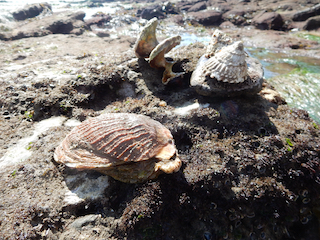
Crassodoma gigas (giant or purple-hinged rock scallop, small adult)
|
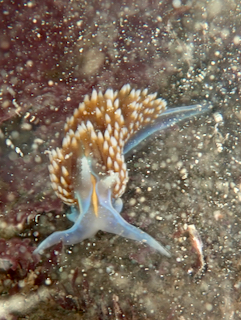
-
| 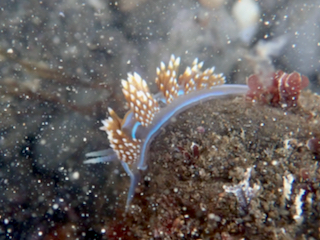
Hermissenda opalescens (opalescent nudibranch)
| 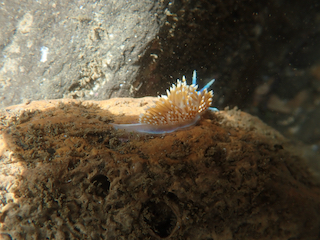
-
|
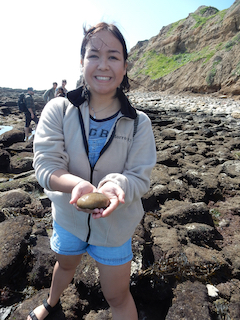
-
| 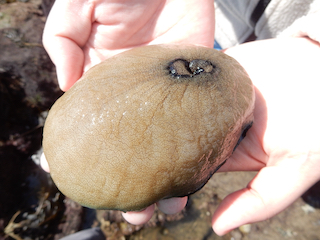
light morph of a giant keyhole limpet (Megathura crenulata)
| 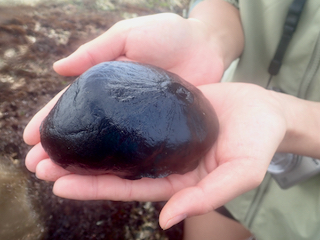
dark morph of the same
|
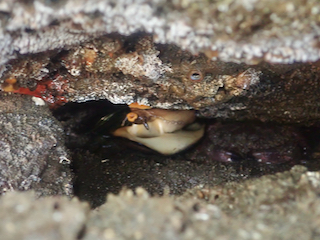
A Megathura crenulata (giant keyhole limpet) hanging out on a low tide.
There is a lot more oxygen in air than in the water, which is fine until the gills start to dry out. Note the Cancer antennarius next to it.
| 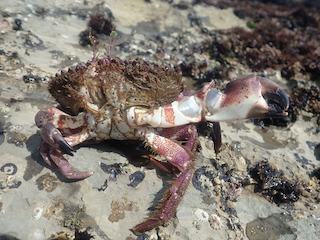
Probably a molt from a Cancer antennarius, perhaps even the same one as in the last album image.
| 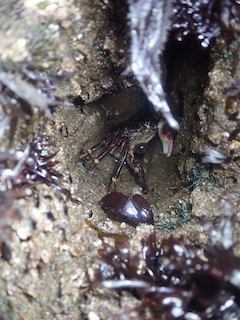
striped shore crab (Pachygrapsus crassipes)
|
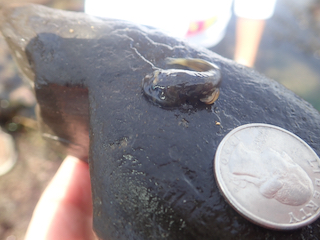
-
| 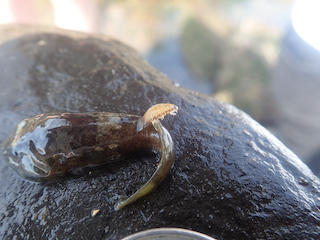
This is a California clingfish (Gobiesox rhessodon) with a parasitic isopod. Thanks to Larry Allen for
confirming identification.
| 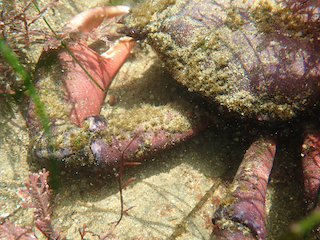
-
|
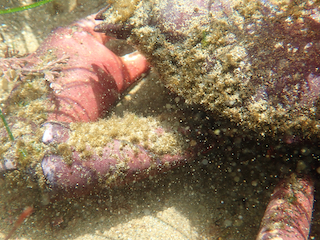
A large male kelp crab, tentatively Taliepus nuttalli (southern kelp crab).
| 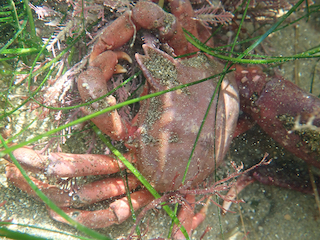
female of the same, found brooding embryos
| 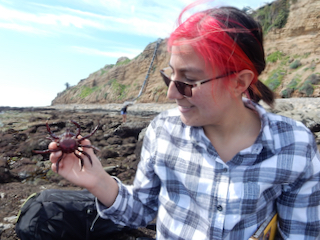
-
|
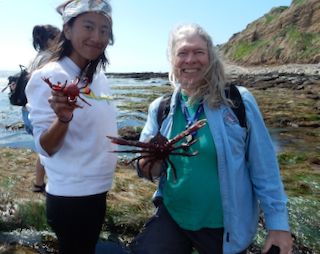
-
| 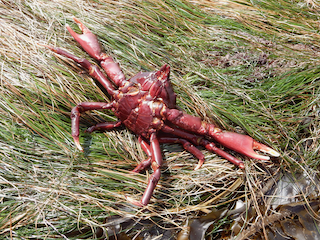
-
| 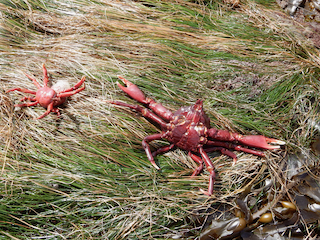
A female (left) and male (right) Taliepus nuttalli (southern kelp crabs). They were fine when we released them.
|
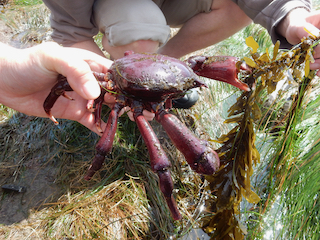
-
| 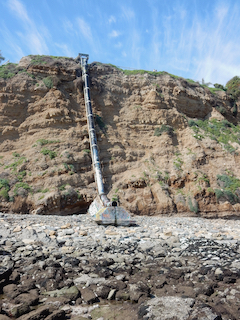
-
| 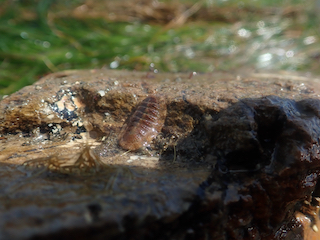
Lepidozona pectinulata
|
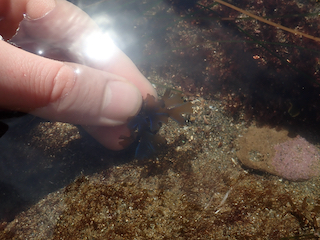
-
| 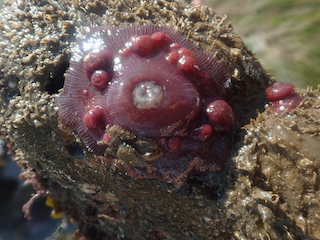
Anemones with white radial lines at the base of the pedal disk are most often identified as Epiactis prolifera,
a species that is also known as the proliferating anemone for how
it broods its offspring on the side of the pedal disk. There are actually several West Coast species in this genus. All brood in a similar manner but they vary in the seasonality
and degree of synchrony in their brooding and not all species are found as far south as southern California, where there has been little study.
| 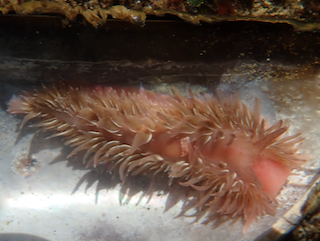
Aeolidia loui (warty shag-rug nudibranch) yesterday in the intertidal of San Pedro, CA.
It was for a long time considered to be the same as a similar NE Atlantic species, A. papillosa, but these two are currently considered distinct. They both eat anemones,
mostly their tentacles, a habit that is normal for their family (Aeolidiidae).
|
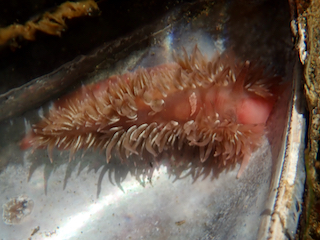
-
| 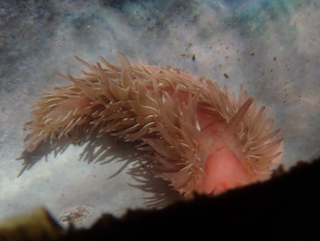
-
| 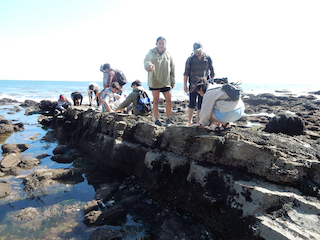
-
|
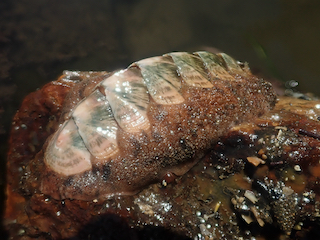
-
| 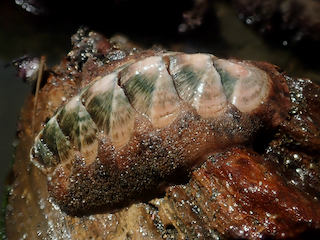
Stenoplax conspicua (conspicuous chiton)
| 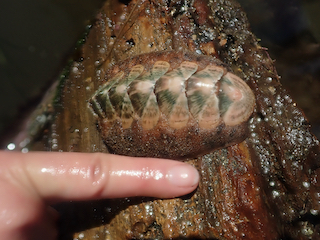
-
|
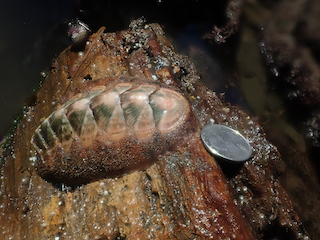
-
| 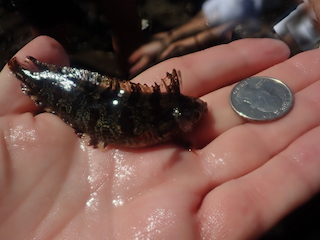
Juvenile giant kelpfish (Heterostichus rostratus)
| 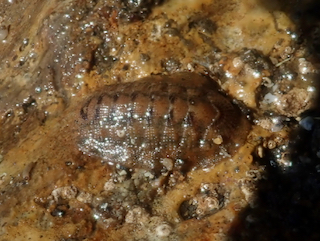
Lepidozona pectinulata is very common under rocks in the intertidal of SoCal.
|
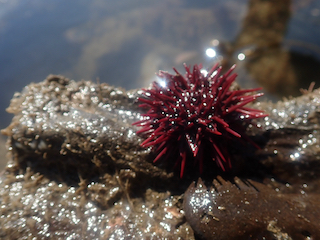
juvenile red urchin (Mesocentrotus franciscanus)
| 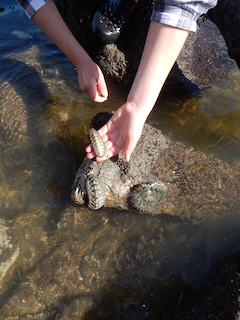
-
| 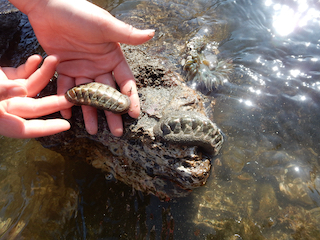
Stenoplax conspicua (conspicuous chiton)
|
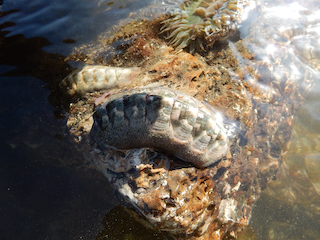
-
| 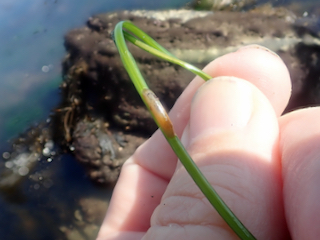
"Lottia" paleacea (surfgrass limpet) on Phyllospadix torreyi (Torrey's surfgrass)
| 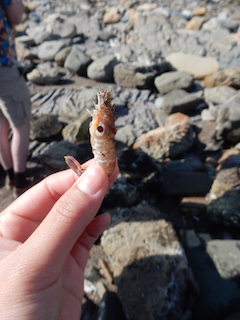
a dead target rock shrimp, Sicyonia penicillata, found in the intertidal
|
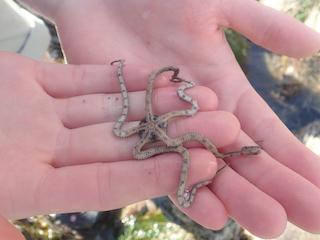
This is the underside of a banded brittlestar (Ophionereis annulata).
| 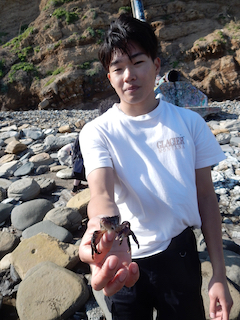
A striped shore crab (Pachygrapsus crassipes)
| 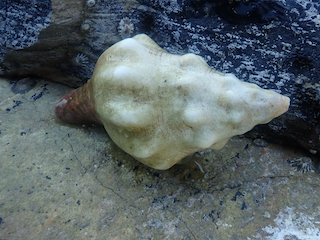
Kelletia kelletii (Kellet's whelk)
|
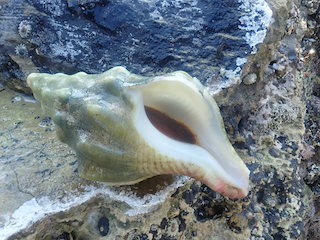
-
| 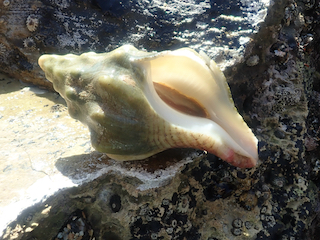
-
| 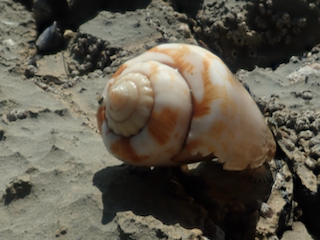
Someone must have dropped their commonly sold but Indo-Pacific strombid shell, a juvenile
Conomurex luhuanus (Linnaeus, 1758). This was found in the San Pedro CA intertidal where it is unlikely to have lived.
Such shells are sometimes referred to as wedding shells to reflect a typical
way a shell like this might end of at a California beach. Thanks to former grad student, Shawn Wiedrick, for this identification.
|
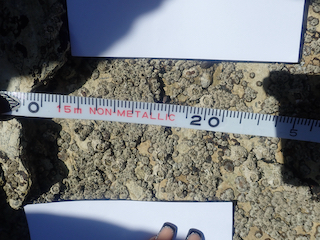
We did an in-field activity to contrast the distribution of the barnacle genera, Balanus
and Chthamalus. Earlier, I distributed this guide for separating Balanus glandula
from Chthamalus fissus the most commonly found species of
Chthamalus found in southern California. A more northern species of Chthamalus, C. dalli, co-occurs with C. fissus on the Central Coast of California.
| 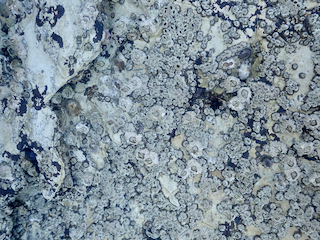
-
| 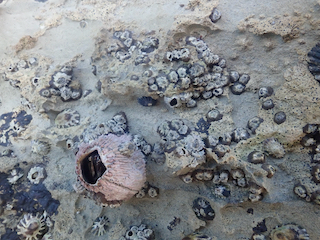
-
|
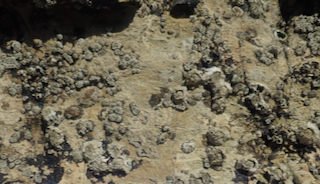
-
| 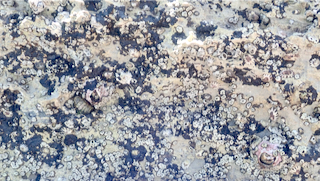
-
| 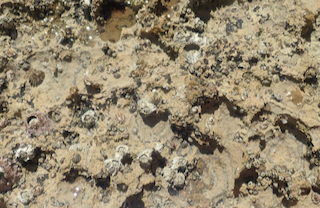
-
|
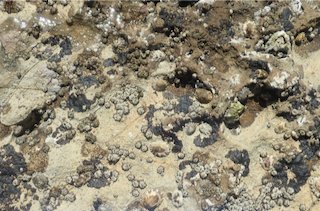
-
| 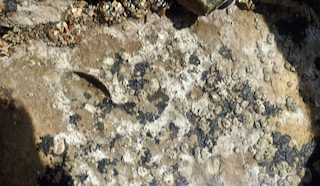
-
| 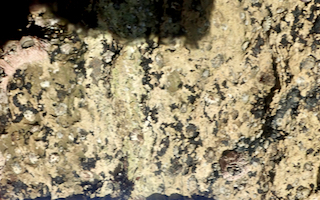
-
|
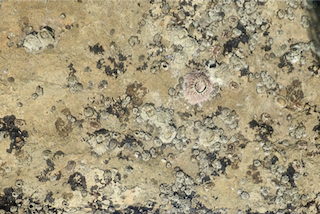
-
| 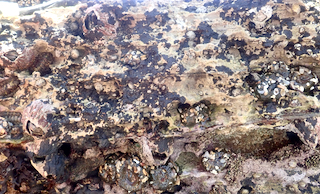
-
| 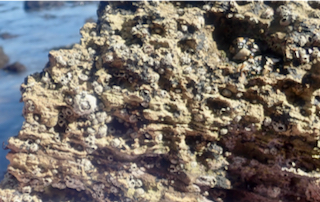
-
|
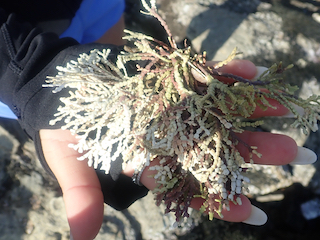
dead and bleached Calliarthron tuberculosum (coarse bead-coral alga)
| 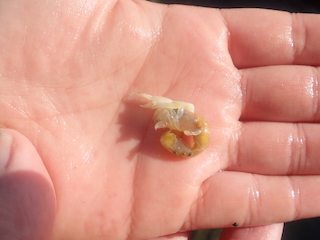
Neotrypaea californiensis (formerly Callianassa californiensis; bay ghost shrimp)
| 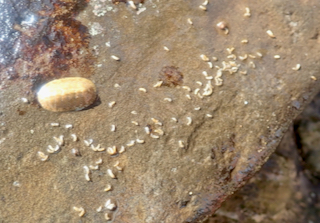
Tiny snails of the family Caecidae (superfamily Truncatelloidea within "Littorinimorpha") with a tube-shaped shell, found under a rock in San Pedro, along with
a chiton. The most common species of Caecidae in southern California is probably Caecum californicum. See:
this review article by Bret Raines on Caecidae from the NE Pacific (western North America). There are only
about six NE Pacific species but many more have been named based on the unique way caecids repeatedly discard the oldest part of their shell as they grow.
|
 Under Construction!
Under Construction! Under Construction!
Under Construction!